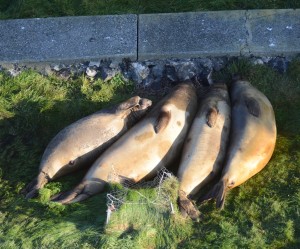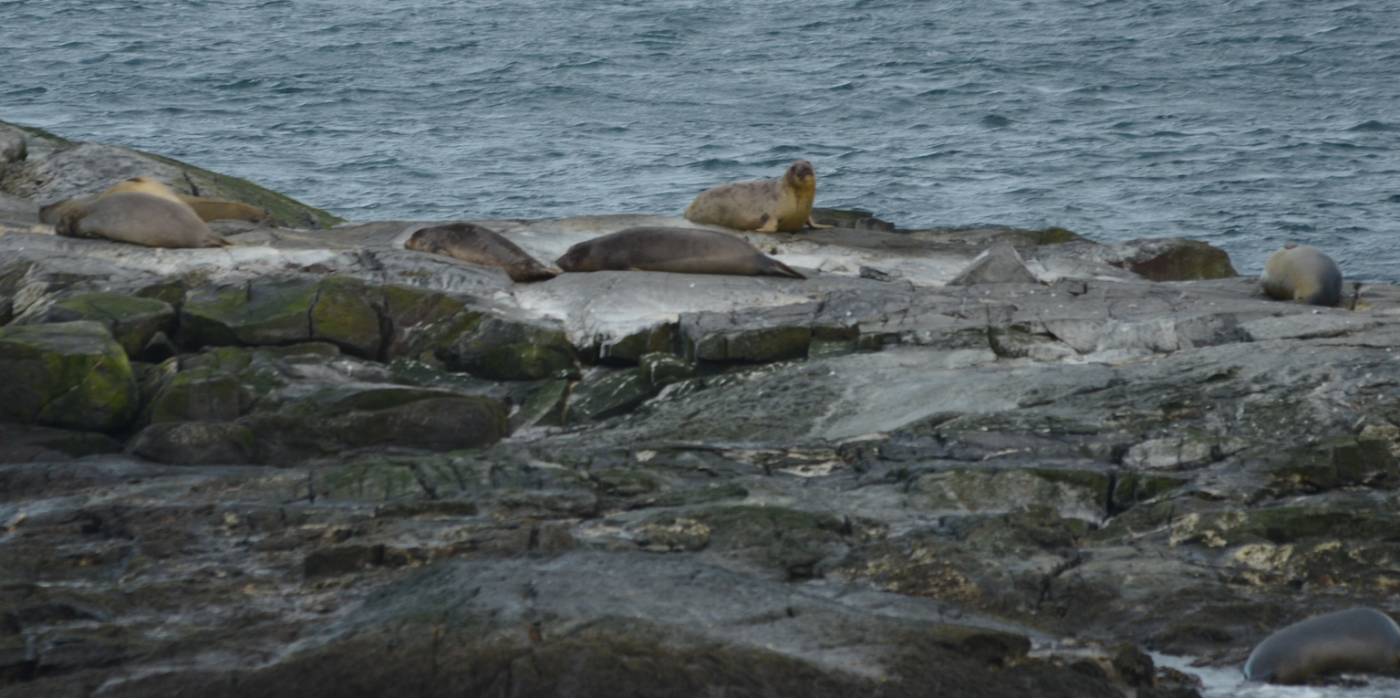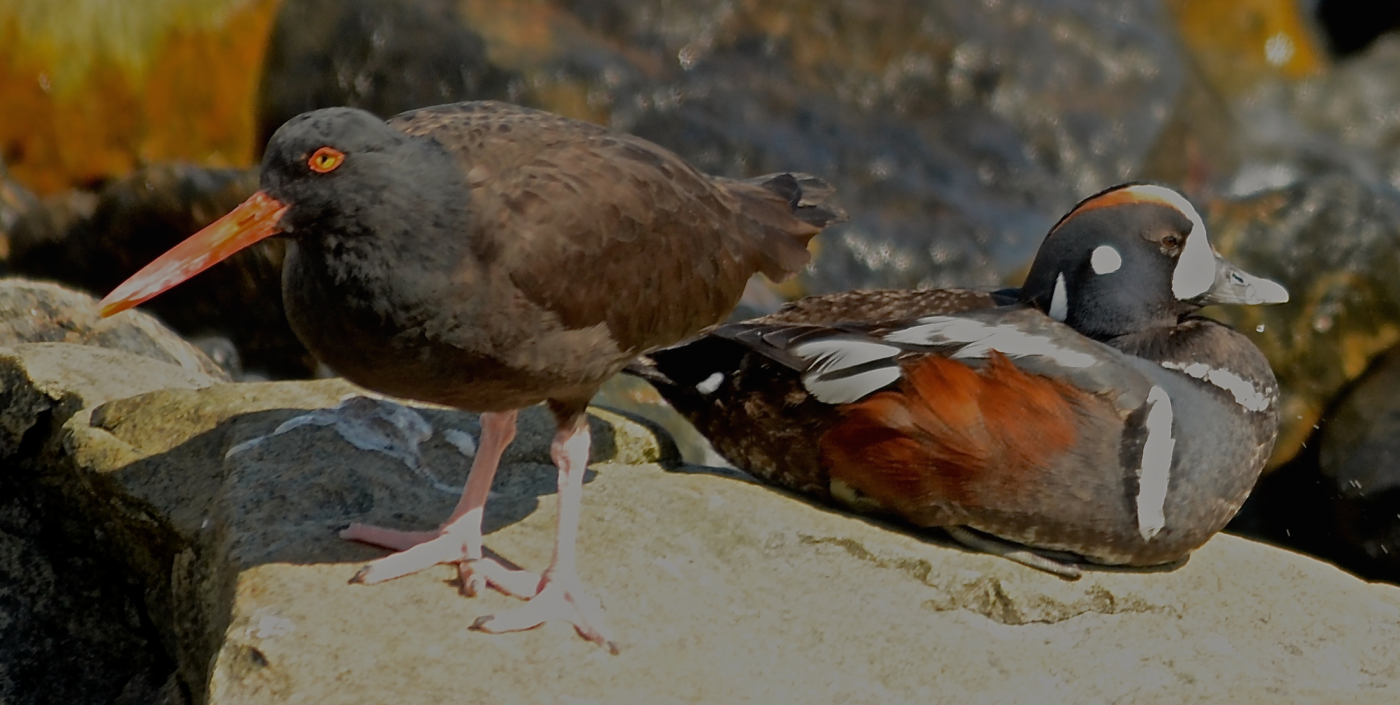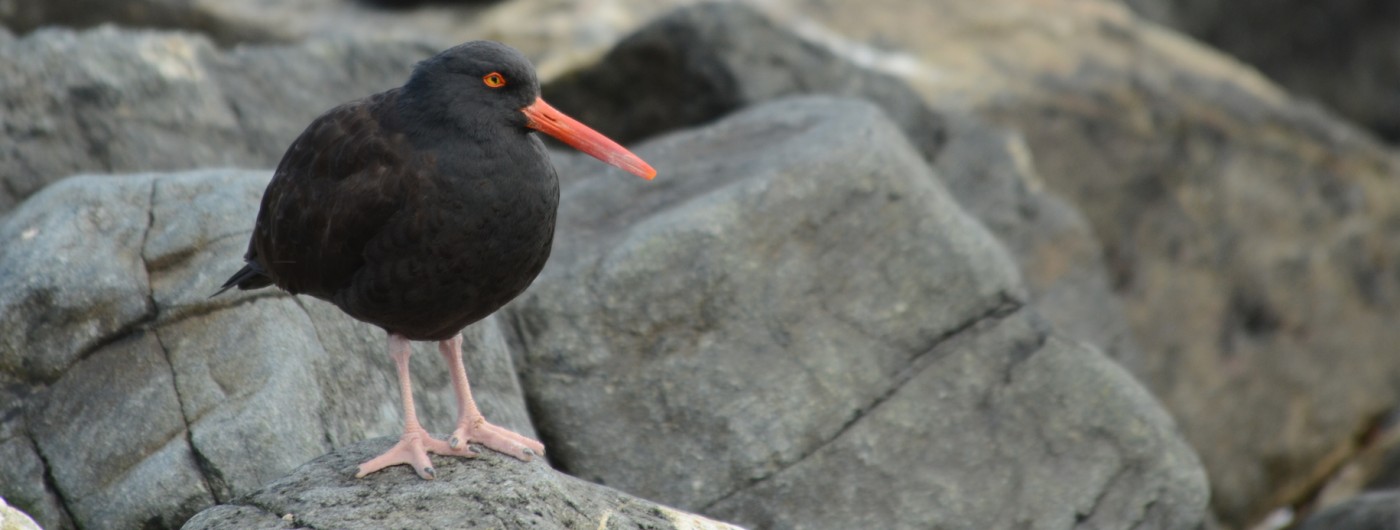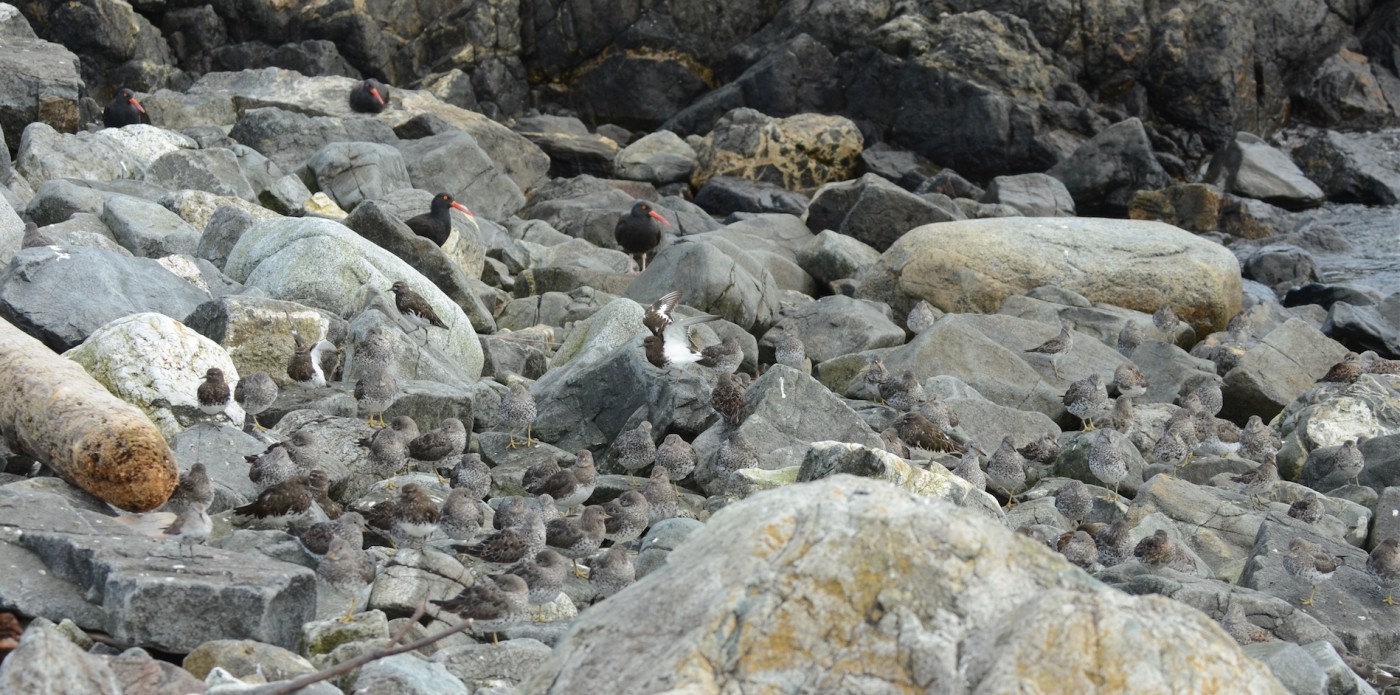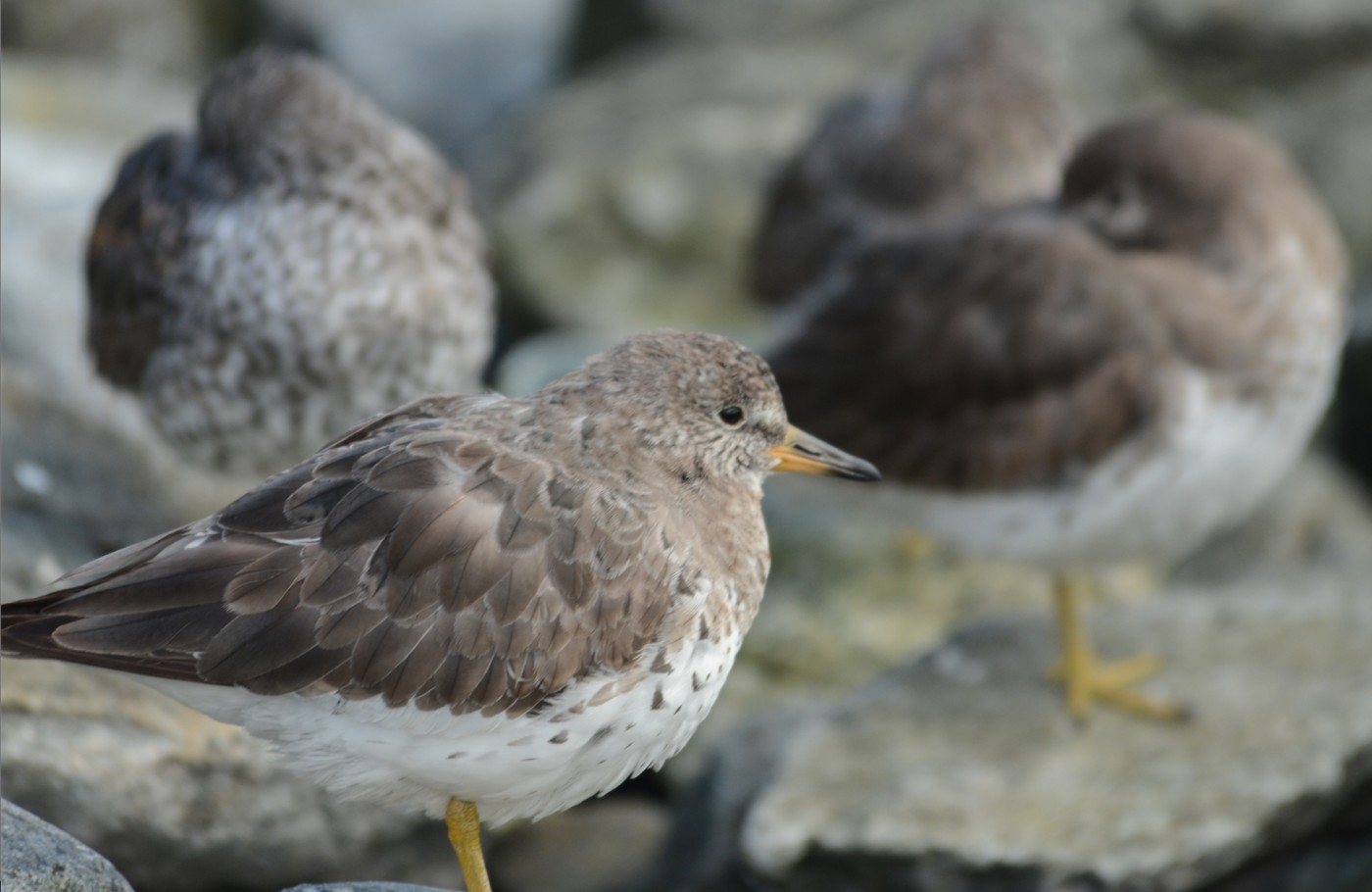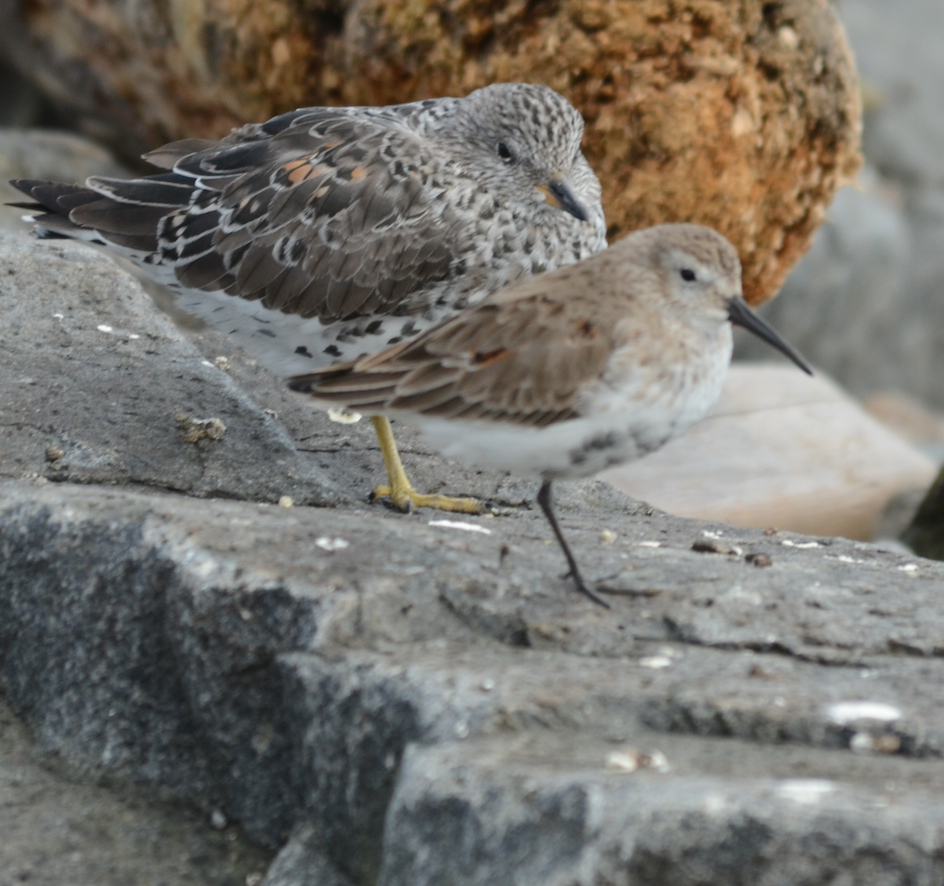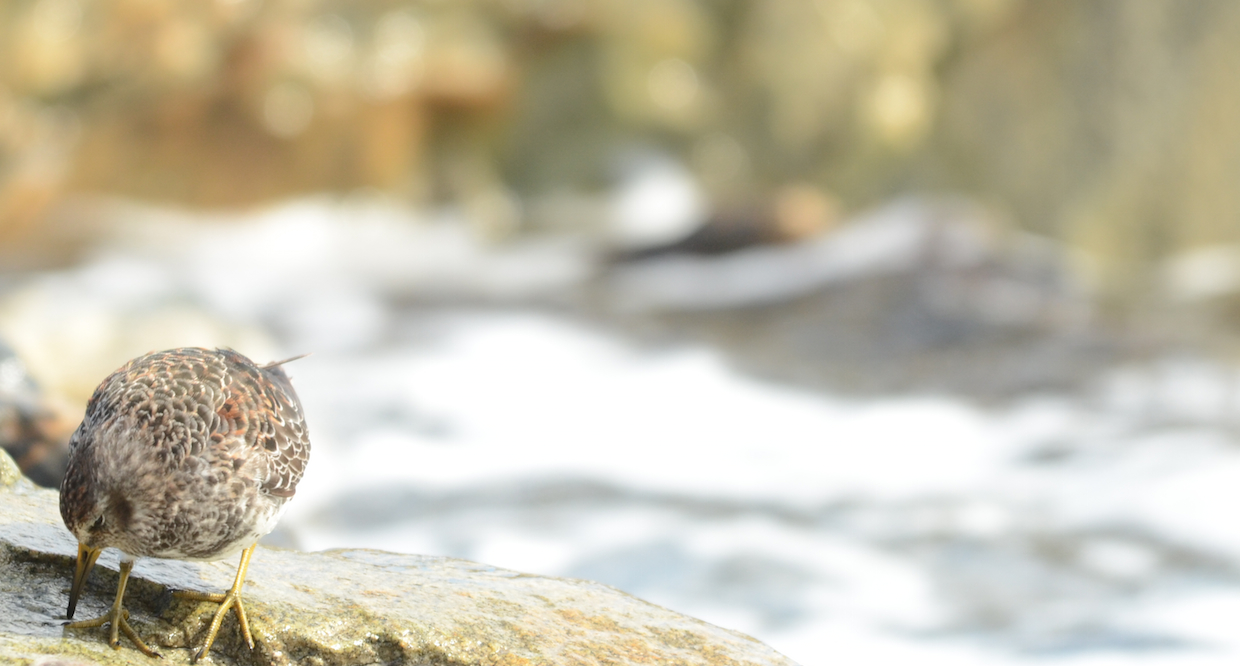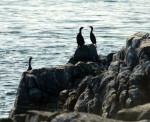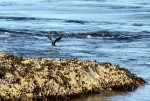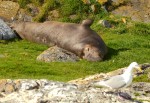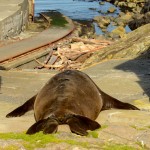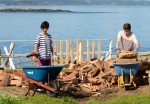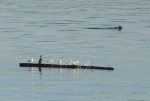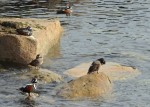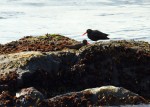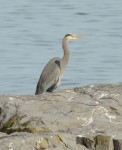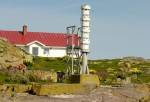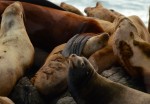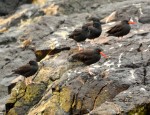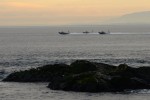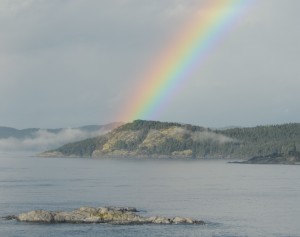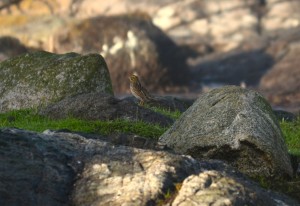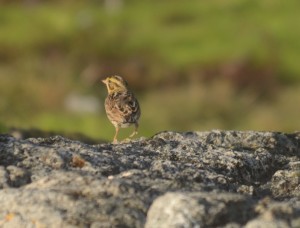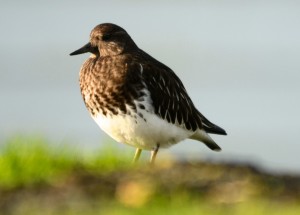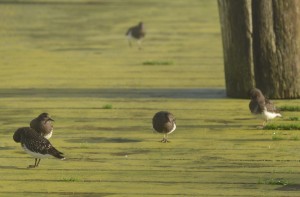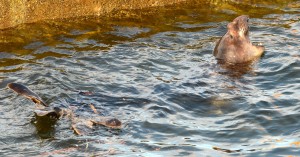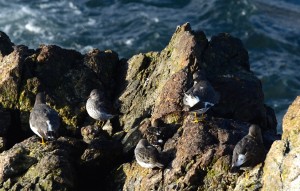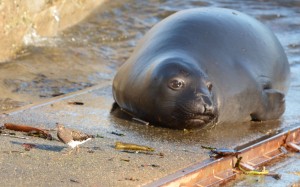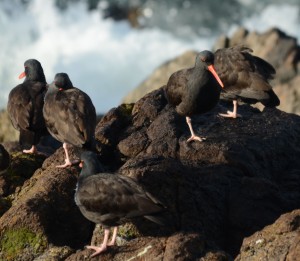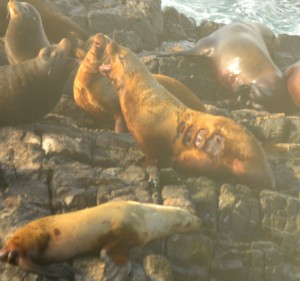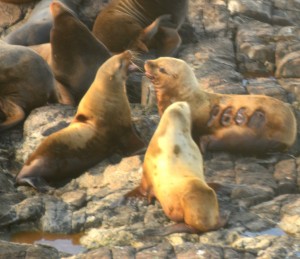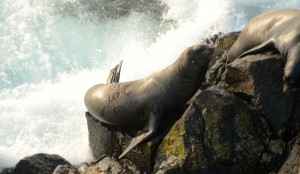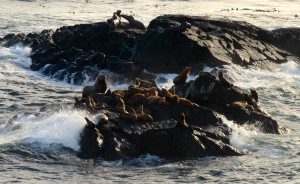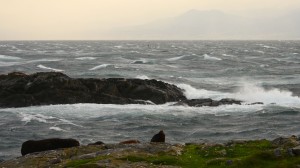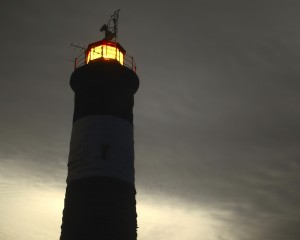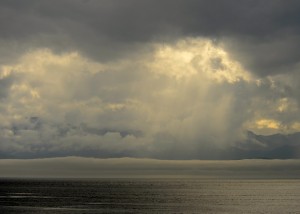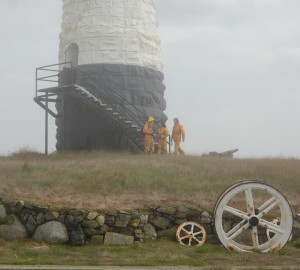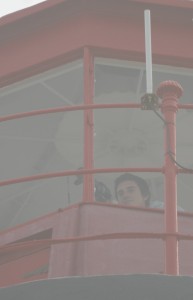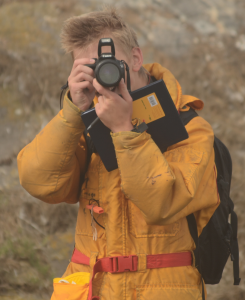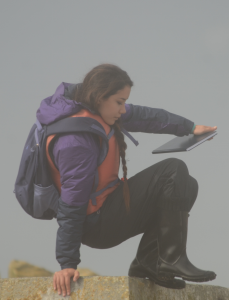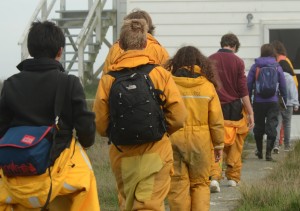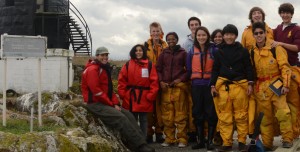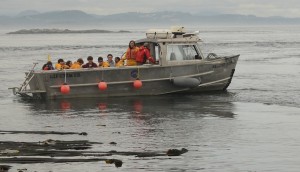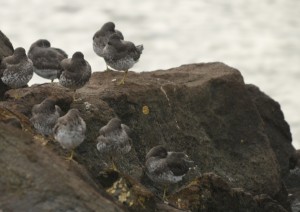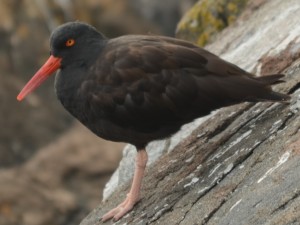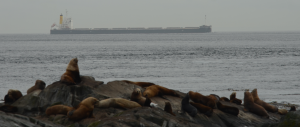Calm seas, sunshine and light winds combined to make it a very pleasant day. The wind really didn’t do much and direction changed throughout the day from west to southeast and back again. There was enough sunshine to power the solar panels, run the de-salinator and build up the batteries. The barometer declined slowly all day after a high start and the forecast is for a mix of sun and cloud tomorrow with a strong westerly winds predicted.
Two whale watching boats used the Ecological Reserve today. From where they were, I am guessing that they enjoyed the pinnipeds and sea otter as well as the birds. Several sports fishing boats transited through at high speed and one fished close to the boundary.
Female Steller’s or Northern Sealion #334R was photographed today. She was branded as a pup in July 2003 at Rogue Reef in southern Oregon.
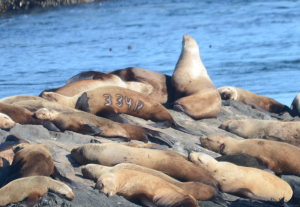
Steller’s Sealions hauled out on South Islets, a female born in southern Oregon in 2003, and branded with #334R is visible.
The Northern Elephant Seals continue to grace Great Race and I am getting used to them not reacting at all to my presence on the walkways.
The Glaucous-winged gulls are starting to mate and gather nesting materials. The Canada Geese are busy defending territory and brooding eggs. Black Oystercatchers are likewise busy when not foraging in the intertidal where limpets seem to be their favourite food.
Today was Animal Census Day and here are the results:
Northern Elephant Seals 26
Harbour Seals 147
California Sea lions 30
Steller’s Sea lions 36
Sea Otter 1
Canada Geese 18
Harlequin Ducks 3
Pelagic Cormorants 8
Double Crested Cormorants 7
Bald Eagle 2 adults, 5 sub-adults
Killdeer 1
Black Oystercatchers 10
Black Turnstones 9
Surfbirds 8
Pigeon Guillemots 164
Glaucous-winged Gulls 345
Northwestern Crow 6
Common Raven 1
There were no visitors today and maintenance chores were routine including running the fire pump to fill cistern.

